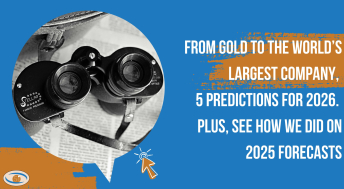Let’s flash back to 1981. Interest rates were 19% to 20%, inflation was everywhere, and the world was awash in fear. Pundits predicted 30% rates—40%--even higher. Canada Savings Bonds—remember those? —were paying 19.5%. For income investors, those days were a dream.
For the economy, though, North America looked vulnerable to turning into a Zimbabwean-type of mess, with massive inflation and massively high interest rates attempting to stop it. Nobody, of course, wanted to borrow money, and the economy plunged into recession.
It was so easy to sell products to income-investors back then—rates were so high, why would investors even think of going anywhere else? 19.5% on the safest, government-guaranteed, cashable bond? Investors would buy that all day long. The stock market, filled with risks and uncertainty—who needed it?
Now, picture yourself as an economic forecaster back then. Suppose, just suppose, you published a report saying that—one day—interest rates would be, um, zero percent. Suppose you postulated that interest rates on Treasuries and certain European deposit instruments would go below zero. If you came out with such a prediction, your forecasting career would likely be very short-lived. You would be laughed out of Bay Street pretty fast. Well guess what, you would have been right. Rates went below zero during the financial crisis, and are pretty close to that now.
Investors needing income have gone from nirvana to despair. Yet despite their despair this is where things get interesting. Despite interest rates of almost nothing, more or less, investors still want all bonds, all the time. Investors are pouring money into bonds, bond funds, and income-structured products pushed out by fund companies to take advantage of this demand. This tsunami of cash only serves to drive interest rates even lower.
Investors seemingly want nothing to do with the stock market, preferring instead to earn $1,180 a month on a $1,000,000 fixed-income investment. With taxes (46%) and inflation (2.9%), over a year you have just lost money on your million dollars.
Investors don’t care though. “I’d rather lose a bit in bonds than a lot in the stock market” is a common refrain. That’s so wrong, though. Planning on losing money has got to be one of the worst investment strategies we have ever heard of.
Bond investors these days would be wise to look up Lemmus Trimucronatus. The common North American lemming, made famous in a Disney film for plunging to their deaths in large quantities purportedly to keep the species population and food supply in balance. See the video at http://www.youtube.com/watch?v=xMZlr5Gf9yY
Because of their association with this odd behavior, lemming suicide is a frequently used metaphor in reference to people who go along unquestioningly with popular opinion, with potentially dangerous or fatal consequences.
That’s where bond and income investors likely are these days. Blindly following the lead of the crowd and the industry and pouring all of their hard-earned cash over the cliff into the bond market. Most investors know they won’t make much money, but are comfortable in the safety of the crowd of the other lemmings, um, investors.
Now, you may not know that the famous Disney film was actually a set-up, a fake. The lemmings in the film were actually mechanically hurled over the cliff via a turntable-like device. For the animals, though, it made nary a difference. They still went….over.
Think about these furry little guys the next time you write a cheque for a fixed-income product. Think also back to 1981. Interest rates can and do change. Investors seem to think they can’t. Trust us, if you owned all bonds in your portfolio, and rates were to go back to 19%, going over a cliff with the lemmings would likely be less painful than watching what would actually happen to your net worth.





Comments
Login to post a comment.